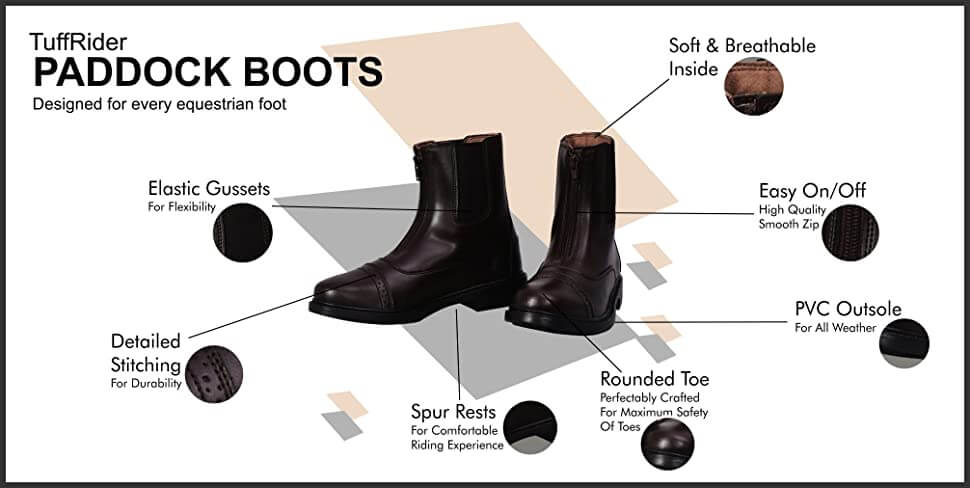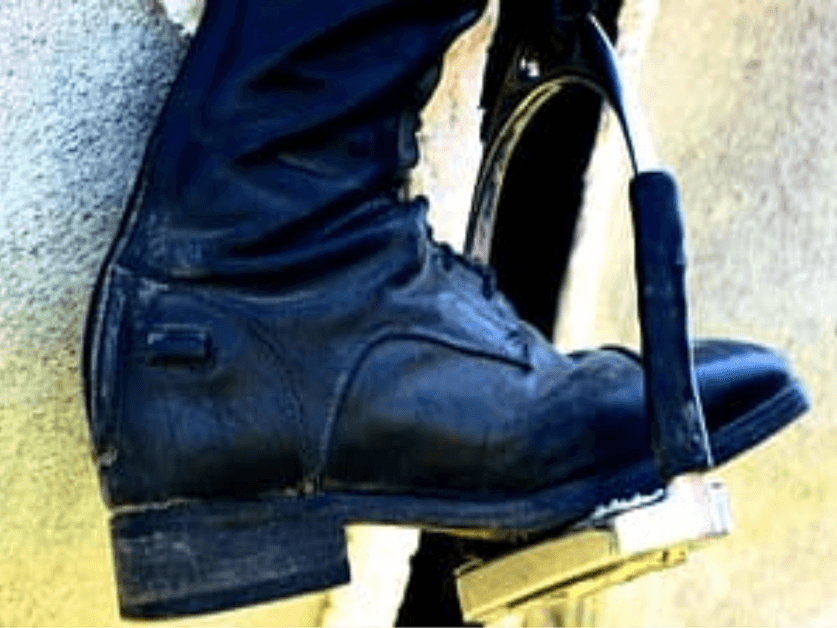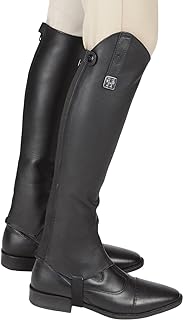Being around horses can be a safe and fun activity. It is important to know what and why to wear certain types of footwear, body protection and a riding helmet.
Again, if a rider is on or off the horse, safety should always be a top priority. In fact, both the feet and head are vulnerable to injury whenever you are close proximity or physically working with horses.
Besides the feet, one of the things on your safety list should be an equestrian riding helmet. Check out my post about riding helmets at this link https://newtohorses.com/what-do-you-wear-to-go-horseback-riding-equestrian-riding-helmets/
Additionally to find out more about what to wear on your body, check out this link to my post. https://newtohorses.com/what-to-wear-horseback-riding-for-the-first-time/
Why should a rider wear “equestrian” footwear?
Injury can happen when a horse or pony accidentally steps on your toes or foot. If he puts all his weight on your barefoot, it could do quite a bit of damage, like crushing the bones of your feet. Don’t wear flip-flops to the barn!! Injuries can happen quickly. If you are being safe and wearing protective equestrian wear, you can prevent or reduce an injury’s severity.
Although infection occurs rarely, we should still discuss it. I was wearing the proper footwear when a pony stepped on me, and I had no signs of damage.
Later that week, I noticed swelling and redness on my big toe. Though I could still move it, it started to ache. I visited the urgent care, and the doctor prescribed me antibiotics. He told me that bacteria are incredibly small and can easily slip through the boot, eventually becoming mashed into the pores and cracks of my skin.
Warning: if this can happen with boots and socks on, can you imagine what might happen if you wear flip-flops or sandals? Or even Chucks? Parents too should always follow these safety guidelines unless they stay in the car.
Two styles of footwear and why only one is right.
There is always an exception to the below points about what to wear. I can’t guarantee an accident will or will not happen while wearing any footwear. But I recommend you err on the safe side and follow these recommendations.
What not to wear and why: rubber or soft-sole footwear
- A shoe with a soft sole supports or encourages a flat foot when stepping into the stirrup. The stirrup bar where you place your foot is about two inches wide; a soft-soled show will bend, and your foot will arc.
- The rubber sole does not absorb the wetness, which makes them very slippery.
- This shoe design lacks a heel, which increases the likelihood of the foot slipping through the front of the stirrup. Inexperienced riders often try to stand on their toes, increasing this risk. If a rider falls off the horse and the foot slips through the stirrup, the horse could drag the rider.
- Soft-soled shoes like tennis shoes are likely to have a soft top and won’t protect your toes from a heavy hoof stomping on them or simply accidently walking on one.
- The soft upper portion of the shoe can become soaked in manure and mud, which can then be absorbed into your socks and skin. (Remember the infection we talked about above?)
- This type of running shoe is wider and can easily become stuck in a stirrup, typically measuring between 3.5 and 6 inches in width.
What to wear and why: leather sole footwear (preferably a full-size boot, or an ankle boot.
- A riding boot should have a heel of at least 1″ to 1.5 “.
- The heel on hard-soled shoes, like leather, helps prevent the foot from slipping through the stirrup by hooking onto the stirrup.
- The hard sole will support your foot on the stirrup and keep it straight or flat.
- The leather sole absorbs moisture. It will help keep the boot from slipping off the stirrup when wet. Composite soles don’t get slippery.
- The upper portion is leather or composite leather and will protect the foot from mud and manure.
- The upper portion usually protects heavy objects like a stomping hoof.
- Putting your heel down is an important part of a proper riding position; a leather sole is less likely to slip out of the stirrup.

Why equestrian riding footwear influences your riding position.
When riding, you want to balance on the ball of your foot and place the weight on your heel, stretching your heel down like someone might stretch their Achilles tendon before a jog. I would tell the kids to imagine a string attached to the bottom of their heels. Then, imagine someone pulling your heel straight down to the ground. Sometimes, certain boots don’t allow this to happen.
Consider investing in riding boots after a few lessons if the rider is committed. English discipline riders call them paddock boots or tall boots. Most of my riders had problems stretching their heel to the ground when riding in western boots. They found it hard to drop their heels properly.
It’s okay at first, while they are learning basic riding, but an English Style riding instructor will ask the new rider to continually try to place weight on the ball of their foot and press or stretch their heels down. A boot with correctly fitting shoe is the best. If the boot is too large the heal of the shoe will slip up to easily.
The rider should not pull the toes up. But, lower their body weight into their heels; they should bear the pressure and stay down. Proper equestrian foot wear will be a plus in forming the proper lower leg position. This position is important to keep a rider in the saddle, on the horse, and safe.
Can I wear Faux fashion footwear?
A little advice from experience.
When searching for suitable equestrian riding footwear to wear around horses, consider shopping in an equestrian company catalog rather than in a shopping mall. I have some links at the bottom of this post. It is essential to keep in mind fashion boots are often overpriced and the quality of the materials is not the same.
Always check the quality of the boots to ensure they are durable enough to withstand the tasks performed and exposure to mud, manure, water, and hooves. And sometimes, the best boots made for horseback riding are less expensive than “fashion” boots.
Once you know you are in it for the long haul. Invest in the best boots for horseback riding.
Maybe you know you or your rider will be riding horses on a regular basis. You will want to invest in a good pair of equestrian footwear. Either paddock boots or tall boots. That will protect your feet and ankles. And allow you to develop an excellent leg position to ride effectively, comfortably, and safely.
Many of my students started the paddock boot brand below. You can use the blue word link below to shop for different brands, styles, and pricing to find the one you prefer. There are boots for kids and adults.
Check out the pricing. They may be more cost-effective than buying a boot from a fashion department. If you have something similar in your closet and don’t mind them getting dirty, wear them to start.
As an Amazon Associate, I earn from qualifying purchases. This helps support the page. It is at no extra cost to you.

Tall boots and Half-chaps
Some people will buy half chaps to put on when riding. They pair up well with paddock boots. These protect your legs like tall boots. However, they are easily taken off, so working with the horse from the ground is more comfortable. Most shows do not allow riding in half chaps. But for casual riding or schooling, they work well.
Thanks for reading my blog. If you have any questions about equestrian riding footwear please comment. And don’t forget to like my Facebook page. I try to keep it up on great articles and training advice from great people or veterinarians.







Leave a Reply